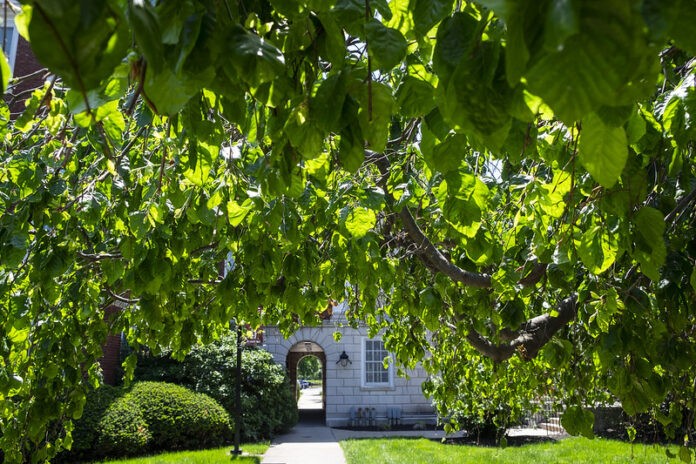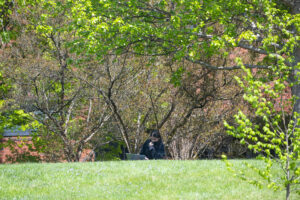
Many people enjoy spending time in nature, basking in the peaceful atmosphere of forests, parks and green spaces. It is widely believed that exposure to plants and trees improves physical and mental wellbeing, and living in areas with an abundant tree canopy is associated with better health. But can these health benefits be proven scientifically?
A new discovery at the University of Louisville may help scientists test the effects of exposure to green plants “greenness” on health. Pawel Lorkiewicz, associate professor of chemistry and environmental medicine at UofL’s Christina Lee Brown Envirome Institute, measured a person’s exposure to trees and plants by testing their urine.
Limonene is a nontoxic substance emitted into the air by many trees and plants. Concentrated limonene has a lemony smell and is used in perfumes, foods, cleaning and other household products. When a person breathes concentrated limonene, the body breaks it down into metabolites which can be measured in their urine.
These metabolites also are in a person’s urine after they spend time in a forest, according to Rachel Keith, associate professor at the Envirome Institute who conducted the study. This means the metabolites can be used to measure a person’s exposure to trees and plants. Comparing this exposure with health information may help researchers more accurately determine whether time spent in nature is beneficial for an individual’s health.
“Even though we may not smell limonene exactly, usually we can tell that we are surrounded by trees and greenness because of the smell. Parks and forests, or even meadows or larger green spaces have a characteristic smell because of plant volatile organic compounds such as limonene,” Lorkiewicz said.
For several years, Envirome Institute researchers have been studying the health effects of living near trees and greenness. As part of the Green Heart Project, they planted trees and shrubs in specific neighborhoods, measuring changes in the residents’ health compared with those living in areas with fewer trees. But the researchers found it challenging to accurately measure an individual’s actual exposure to trees. There may be many trees where they live, but they spend much of their time working in tree-sparse locations or indoors, insulated from trees and plants.
So the team searched for a way to measure how much time an individual spent around greenness. Because many trees and plants release significant amounts of limonene into the air, they developed a method to test for limonene exposure using urine, which is easy to collect.

After testing the urine of people who smelled pure limonene from a vial, they compared those results with urine from people who spent time walking in a forest. They found the same metabolites in the urine of both groups, tagging three of them as reliable biomarkers of exposure to greenness.
“It was very exciting. That’s what constitutes a biomarker, something was released by trees in real life, metabolized by our bodies and found in our urine, not just the result of smelling a pure chemical in a lab,” Lorkiewicz said. “So, we objectively can tell when someone is not working in an office at a desk, but they actually go outside and are surrounded by greenness.”
Keith said the biomarker for greenness exposure is a breakthrough for the Green Heart Project, the Trager MicroForest project in downtown Louisville and other studies.
“We have been working with the overall premise that trees affect health in a positive way. Our mission in the Green Heart Project is to understand in some ways how they do that,” she said. “We have turned to the idea of using the human as the biomonitor of greenness in the human. We hope to use this to see changes in people’s overall exposure to greenness as we plant trees and determine whether those changes correlate to changes in health.”
To assess people’s exposure to trees and plants, Keith combines the limonene biomarker test with satellite images showing tree density where people live and surveys of their time spent outdoors and compares the exposure information with health data such as blood pressure and heart rate.
In additional research, Keith and her team are using the biomarker to compare the health effects of limonene and other compounds emitted by plants on the body.





























